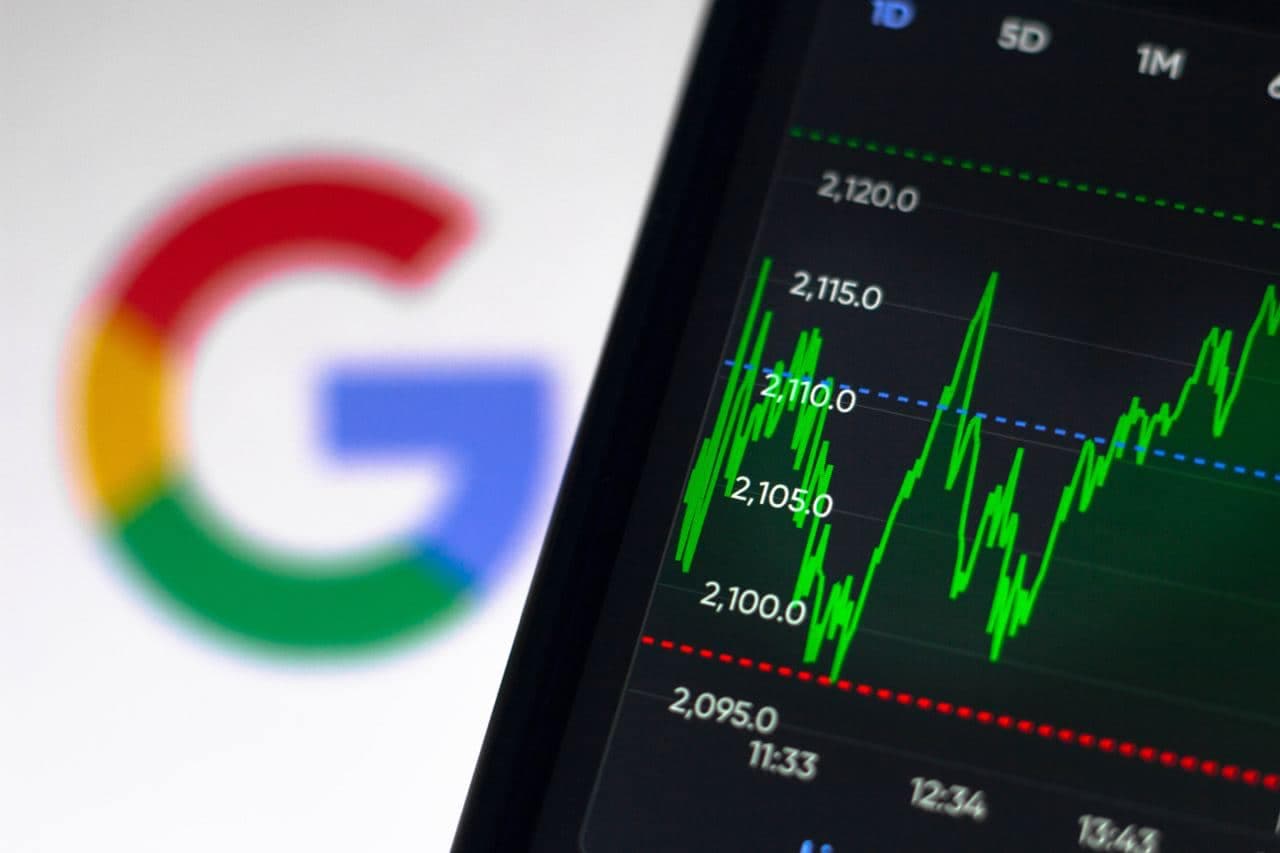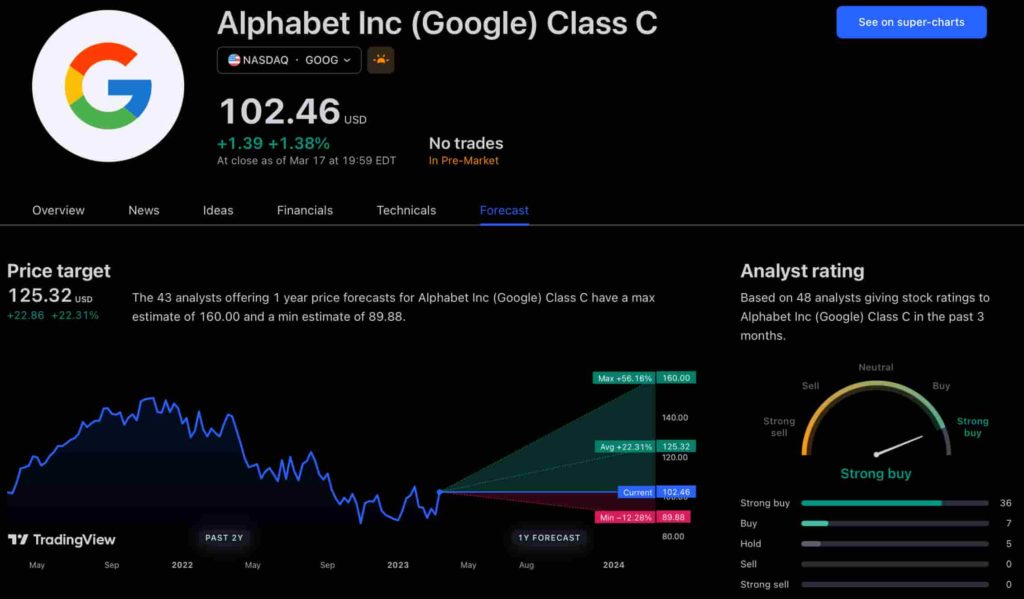The new app is called watchGPT and as I tipped off already, it gives you access to ChatGPT from your Apple Watch. Now the $10,000 question (or more accurately the $3.99 question, as that is the one-time cost of the app) is why having ChatGPT on your wrist is remotely necessary, so let’s dive into what exactly the app can do.
NEWS
Google Announces Search Redesign Using MUM Algorithm via @sejournal, @martinibuster

Google announced that MUM will be integrated into some searches on Google Search. Google’s search results page is undergoing changes that will introduce new ways to discover and explore topics for certain searches.
This new way of searching expands on the old way of searching for answers and introduce a more intuitive way to explore topics.
Google will in the coming months guide users down topic paths in a redesigned search experience for some searches that will be more visual.
One of these changes is apparently already in search.
The Google MUM Algorithm
Earlier in 2021 Google introduced a new search algorithm that can search across languages and with images to find answers to complex questions.
Advertisement
Continue Reading Below
This algorithm is called MUM, which is short for Multitask Unified Model.
The feature that Google is running with most is the ability to search with images instead of just text.
Google has already announced the integration of MUM into their Lens app in the coming months.
How Google MUM Will Change Search
The MUM algorithm will be introduced into Google Search and it will bring dramatic changes to the whole idea of what search means.
Users currently search for answers. But this new way of searching will help users explore more complex tasks while also introducing an entirely different way of presenting answers, particularly with images.
Advertisement
Continue Reading Below
The goal for these changes is to make searching more intuitive.
Google Search Redesign
Google characterized this change as a redesign of search and that’s exactly what it is.
This new version of search takes three big steps away from the old ten blue links search engine.
MUM is Changing Search in Three Important Ways:
- Things to know
- Topic zoom
- Visually browsable search results
What is Google’s Things to Know?
The “things to know” feature incorporates Google MUM to understand all the ways users explore a topic. Google provides the example of the keyword phrase, “acrylic painting.”
Google notes that there are over 350 topics associated to that keyword phrase.
The “things to know” feature will identify the most relevant or popular “paths” that users take in exploring that topic and surface more website content that relates to that.
So rather than waiting for users to conduct follow up searches, Google search will anticipate those related topics and surface the content.
This is how this new search feature works:
Advertisement
Continue Reading Below
“For example, we can identify more than 350 topics related to acrylic painting, and help you find the right path to take.”
Video Animation of “Things to Know” Feature
Topic Exploration in Google Search
The second new feature is referred to as Topic Zoom. This feature allows a searcher to jump in and out of related topics.
A searcher can broaden the topic or zoom in to a more granular sub-topic.
Visual Exploration
The third new MUM feature is one that appears to be available now in Google Search.
Visual Exploration is a new way visual way to explore a topic.
Advertisement
Continue Reading Below
This new feature will not show up for all searches.
It is restricted to searchers where the user intent is to find inspiration.
Google explains it like this:
“This new visual results page is designed for searches that are looking for inspiration, like “Halloween decorating ideas” or “indoor vertical garden ideas,” and you can try it today.”
How Google MUM and AI Are Changing Search
These new ways of searching appear to be designed to help searchers discover more websites and more web pages on the web.
Rather than limit users to the ten blue links, Google is making it easier for searchers to explore topics on many more websites than the old ten blue links way.
Advertisement
Continue Reading Below
This should be good news for publishers.
How do you SEO for this? I suspect that nothing is going to change on Google’s end as far as search optimization.
The traditional way of doing things where title tags and headings are used for dumping high traffic keywords in the Keyword-1, Keyword 2 style of SEO may have to be revisited, but that’s been the case for several years.
It may be useful to follow Google’s guidelines for titles and headings by using them to actually describe what the web page and the web page sections are about.
Making a web page easy to understand is one of the core attributes of good SEO.
Advertisement
Continue Reading Below
Citation
Read Google’s Announcement on MUM in Google Search
How AI is Making Information More Useful
Facebook Faces Yet Another Outage: Platform Encounters Technical Issues Again

Uppdated: It seems that today’s issues with Facebook haven’t affected as many users as the last time. A smaller group of people appears to be impacted this time around, which is a relief compared to the larger incident before. Nevertheless, it’s still frustrating for those affected, and hopefully, the issues will be resolved soon by the Facebook team.
Facebook had another problem today (March 20, 2024). According to Downdetector, a website that shows when other websites are not working, many people had trouble using Facebook.
This isn’t the first time Facebook has had issues. Just a little while ago, there was another problem that stopped people from using the site. Today, when people tried to use Facebook, it didn’t work like it should. People couldn’t see their friends’ posts, and sometimes the website wouldn’t even load.
Downdetector, which watches out for problems on websites, showed that lots of people were having trouble with Facebook. People from all over the world said they couldn’t use the site, and they were not happy about it.
When websites like Facebook have problems, it affects a lot of people. It’s not just about not being able to see posts or chat with friends. It can also impact businesses that use Facebook to reach customers.
Since Facebook owns Messenger and Instagram, the problems with Facebook also meant that people had trouble using these apps. It made the situation even more frustrating for many users, who rely on these apps to stay connected with others.
During this recent problem, one thing is obvious: the internet is always changing, and even big websites like Facebook can have problems. While people wait for Facebook to fix the issue, it shows us how easily things online can go wrong. It’s a good reminder that we should have backup plans for staying connected online, just in case something like this happens again.
NEWS
We asked ChatGPT what will be Google (GOOG) stock price for 2030

Investors who have invested in Alphabet Inc. (NASDAQ: GOOG) stock have reaped significant benefits from the company’s robust financial performance over the last five years. Google’s dominance in the online advertising market has been a key driver of the company’s consistent revenue growth and impressive profit margins.
In addition, Google has expanded its operations into related fields such as cloud computing and artificial intelligence. These areas show great promise as future growth drivers, making them increasingly attractive to investors. Notably, Alphabet’s stock price has been rising due to investor interest in the company’s recent initiatives in the fast-developing field of artificial intelligence (AI), adding generative AI features to Gmail and Google Docs.
However, when it comes to predicting the future pricing of a corporation like Google, there are many factors to consider. With this in mind, Finbold turned to the artificial intelligence tool ChatGPT to suggest a likely pricing range for GOOG stock by 2030. Although the tool was unable to give a definitive price range, it did note the following:
“Over the long term, Google has a track record of strong financial performance and has shown an ability to adapt to changing market conditions. As such, it’s reasonable to expect that Google’s stock price may continue to appreciate over time.”
GOOG stock price prediction
While attempting to estimate the price range of future transactions, it is essential to consider a variety of measures in addition to the AI chat tool, which includes deep learning algorithms and stock market experts.
Finbold collected forecasts provided by CoinPriceForecast, a finance prediction tool that utilizes machine self-learning technology, to anticipate Google stock price by the end of 2030 to compare with ChatGPT’s projection.
According to the most recent long-term estimate, which Finbold obtained on March 20, the price of Google will rise beyond $200 in 2030 and touch $247 by the end of the year, which would indicate a 141% gain from today to the end of the year.
Google has been assigned a recommendation of ‘strong buy’ by the majority of analysts working on Wall Street for a more near-term time frame. Significantly, 36 analysts of the 48 have recommended a “strong buy,” while seven people have advocated a “buy.” The remaining five analysts had given a ‘hold’ rating.

The average price projection for Alphabet stock over the last three months has been $125.32; this objective represents a 22.31% upside from its current price. It’s interesting to note that the maximum price forecast for the next year is $160, representing a gain of 56.16% from the stock’s current price of $102.46.
While the outlook for Google stock may be positive, it’s important to keep in mind that some potential challenges and risks could impact its performance, including competition from ChatGPT itself, which could affect Google’s price.
Disclaimer: The content on this site should not be considered investment advice. Investing is speculative. When investing, your capital is at risk.
NEWS
This Apple Watch app brings ChatGPT to your wrist — here’s why you want it

ChatGPT feels like it is everywhere at the moment; the AI-powered tool is rapidly starting to feel like internet connected home devices where you are left wondering if your flower pot really needed Bluetooth. However, after hearing about a new Apple Watch app that brings ChatGPT to your favorite wrist computer, I’m actually convinced this one is worth checking out.
-

 MARKETING6 days ago
MARKETING6 days agoA Recap of Everything Marketers & Advertisers Need to Know
-

 PPC5 days ago
PPC5 days agoHow the TikTok Algorithm Works in 2024 (+9 Ways to Go Viral)
-

 MARKETING4 days ago
MARKETING4 days agoHow To Protect Your People and Brand
-

 SEARCHENGINES5 days ago
SEARCHENGINES5 days agoGoogle Started Enforcing The Site Reputation Abuse Policy
-

 SEO5 days ago
SEO5 days agoBlog Post Checklist: Check All Prior to Hitting “Publish”
-

 SEO3 days ago
SEO3 days agoHow to Use Keywords for SEO: The Complete Beginner’s Guide
-

 PPC6 days ago
PPC6 days agoHow to Craft Compelling Google Ads for eCommerce
-

 MARKETING5 days ago
MARKETING5 days agoElevating Women in SEO for a More Inclusive Industry













